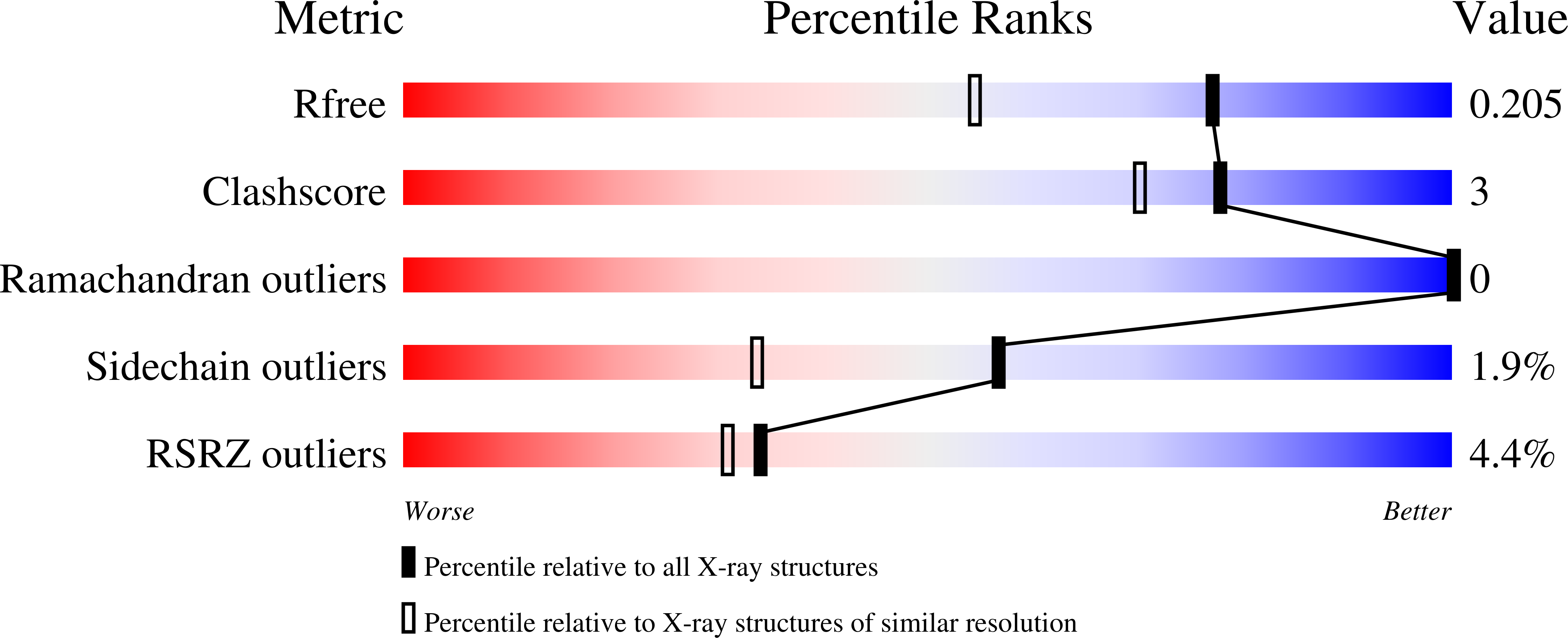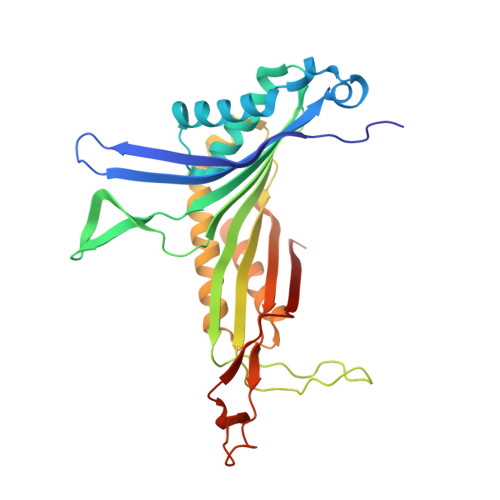A dipicolinate lanthanide complex for solving protein structures using anomalous diffraction.
Pompidor, G., Maury, O., Vicat, J., Kahn, R.(2010) Acta Crystallogr D Biol Crystallogr 66: 762-769
- PubMed: 20606256
- DOI: https://doi.org/10.1107/S0907444910010954
- Primary Citation of Related Structures:
2PE7, 2PES, 3LGR - PubMed Abstract:
Tris-dipicolinate lanthanide complexes were used to prepare derivative crystals of six proteins: hen egg-white lysozyme, turkey egg-white lysozyme, thaumatin from Thaumatococcus daniellii, urate oxidase from Aspergillus flavus, porcine pancreatic elastase and xylanase from Trichoderma reesei. Diffraction data were collected using either synchrotron radiation or X-rays from a laboratory source. In all cases, the complex turned out to be bound to the protein and the phases determined using the anomalous scattering of the lanthanide led to high-quality electron-density maps. The binding mode of the complex was characterized from the refined structures. The lanthanide tris-dipicolinate was found to bind through interactions between carboxylate groups of the dipicolinate ligands and hydrogen-bond donor groups of the protein. In each binding site, one enantiomeric form of the complex is selected from the racemic solution according to the specific site topology. For hen egg-white lysozyme and xylanase, derivative crystals obtained by cocrystallization belonged to a new monoclinic C2 crystal form that diffracted to high resolution.
Organizational Affiliation:
Institut de Biologie Structurale J.-P. Ebel, UMR 5075, 41 Rue Jules Horowitz, Grenoble, France.

















